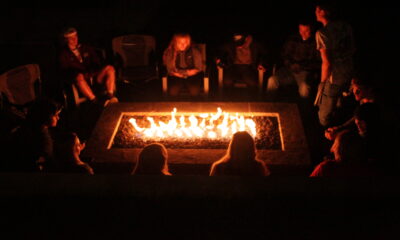Adrenaline, skill, self confidence and a little bit of fear are the key factors of white water kayaking. The only thing you really have to trust is your life jacket and your training.
A swim test is required for students in the class to ensure that they can safely swim ashore should their boat capsize, a common occurrence in the sport. A kayak, which is about 7 feet long, and a double sided paddle are the main ingredients to the recipe for this sport.
“It’s a chance to get outside to do something interesting and fun and to learn a new hobby,” said Charlie Roberts, 19, from Wallace.
Even radiology major Jesse Kroetch, 20, Post Falls, said that he likes to “push the limits and himself.” Even though Kroetch mentioned this class “adds to his full-time schedule,” he said he sees that it is a good time and a way to actually enjoy school.
Instructor Jacob Rothrock, 37, is the assistant coordinator for Outdoor Pursuits. He plans trips for the year as well as instructing part time in classes ranging from fly fishing to white water kayaking, sea kayaking and sailing.
The class is held 11 a.m. to 3 p.m. Thursdays. The four-hour class teaches students how to recover if your boat turns over and the correct paddling technique
Upon entering the water for the first time in their kayaks, the students get a feel for the boat in the water and learn that centering body weight is important to maintain balance. While paddling around the water outside NIC, students gained confidence in their kayak and themselves while increasing their skills and desire for excitement, as well as getting exercise.
Rothrock definitely loves what he does, and the students eagerly await instructions. It’s obvious that Rothrock can put things into perspective for students so they can all relate to his teachings.
Demonstrating to students how to use the paddle, Rothrock described it as a “big spoon eating cereal. If you don’t use it this way, you’re gonna starve.” The safety factors include proper bailing techniques if you capsize your boat, confidence and trusting your gear into the class make it more realistic and serious, but fun is not far behind.
Although this class is held in the fall semester, it only lasts until mid-October due to increasingly cold weather, and is only a one-credit class. Should any students wish to explore their interest or curiosity for this sport, it is highly recommended both by students and faculty to take this class in the spring semester.





















